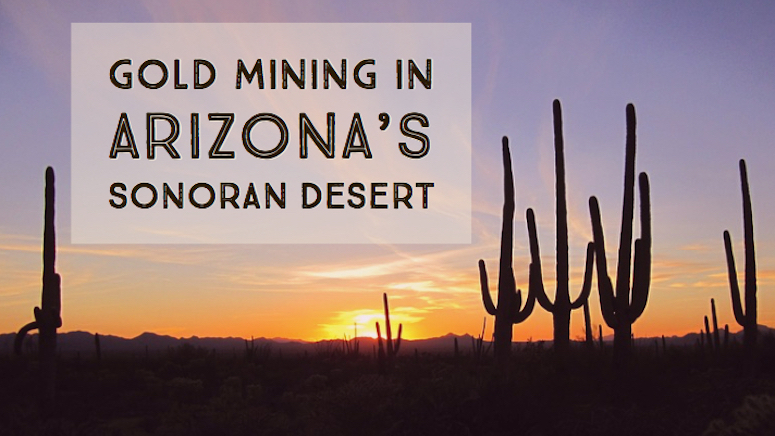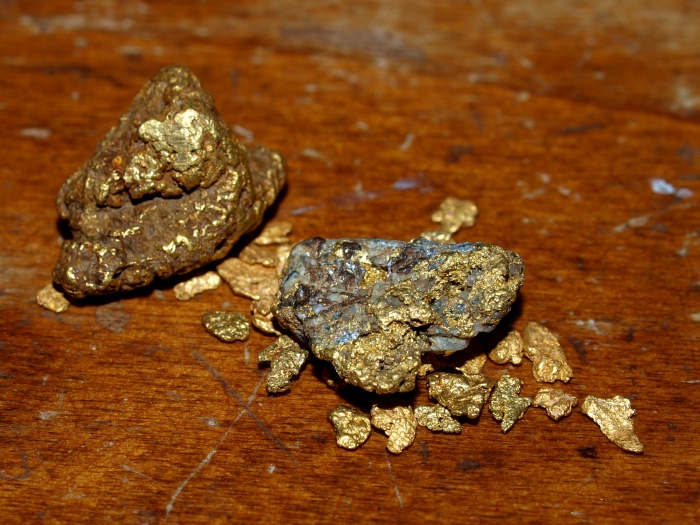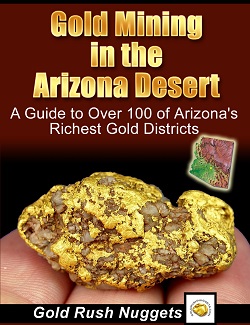
The Sonoran Desert covers huge parts of Southern California, Southwest Arizona, and Mexico. This is a harsh desert that has been known to have gold long before the discovery at Sutter’s Mill.
The summer climate is simply to harsh for most gold prospectors. That changes during the winter months when many gold prospectors move into the region to try their luck. The deposits are widespread throughout this desert, and a complete lack of water has limited the amount of mining done historically.
Depending on your location, you could potentially find gold ranging from fine gold all the way up to multi-ounce gold nuggets. The type of gold that occurs there should dictate your prospecting methods. I recommend getting a good book like Placer Gold Deposits of Arizona which will cover some of these areas in greater detail and also reference the type of gold found in each area.
Below I want to cover 3 of the main areas that prospectors have had success in Southwest Arizona. All of these places have produce gold nuggets, making them good areas to hunt with metal detectors.
Greaterville AZ
Greaterville is an abandoned mining camp roughly 45 miles southwest of Tucson. There were many gold-bearing gulches that drained the eastern side of the Santa Rita Mountains. Hughes, Louisiana, Graham, Kentucky, Boston and Ophir Gulch. Most of these places are within the Coronado National Forest.
There are a handful of lode mines scattered throughout the area. The Morning Star and Mountain King Mine are two of the largest mines along with many scattered prospectors on the hills.
While this area was mined extensively, the limited water was always a challenge. When available, the miners were able to work the gulches and recover a lot of gold, but there are lots of benches and side channels that were never worked and will still produce.

Yuma, AZ
There is good gold throughout the desert around Yuma. Some very significant lode mines were worked in the Kofa Mountains. The North Star and the King of Arizona Mine were the biggest producers. Lots of gulches throughout the Kofa Mountains are gold producers. They are now within a National Wildlife Refuge and prospecting is not allowed last I checked.
The Laguna Mountains are right outside of Yuma and are known gold producers. There’s plenty of good gold left in these hills, even though they have been hunted very hard over the years. You can use a detector to find small nuggets in stringers of decomposed material. You can dig this material out and run it through a drywasher and sometimes recovery good values.
Be aware that there are many areas (wildlife refuge, military, private) that are off-limited to prospectors. You will need to consult your map and we careful about the areas you search. There are also lots of claims. Joining a prospecting club can get you on some of the better ground in this area.
Quartzsite, AZ
East of the Dome Rock Mountains are several gold mining areas. Middle Camp and La Cholla are two of the rich mining districts. The Oro Fino placers were another rich area. This area is close to Quartzsite so it has been hunted hard over the years, but there is still gold there to be found.
In some of the harder hit placers, dry washing can often be worthwhile. Locating a decent area won’t be too hard. There are literally thousands of tailing piles scattered around the desert, and many of these spots will still produce finer gold. Get yourself a Minelab Gold Monster and scan the tailings piles as you work. You are likely to pick up some small nuggets as you work.
Next: This Arizona Gold Mine was the Richest in the State

